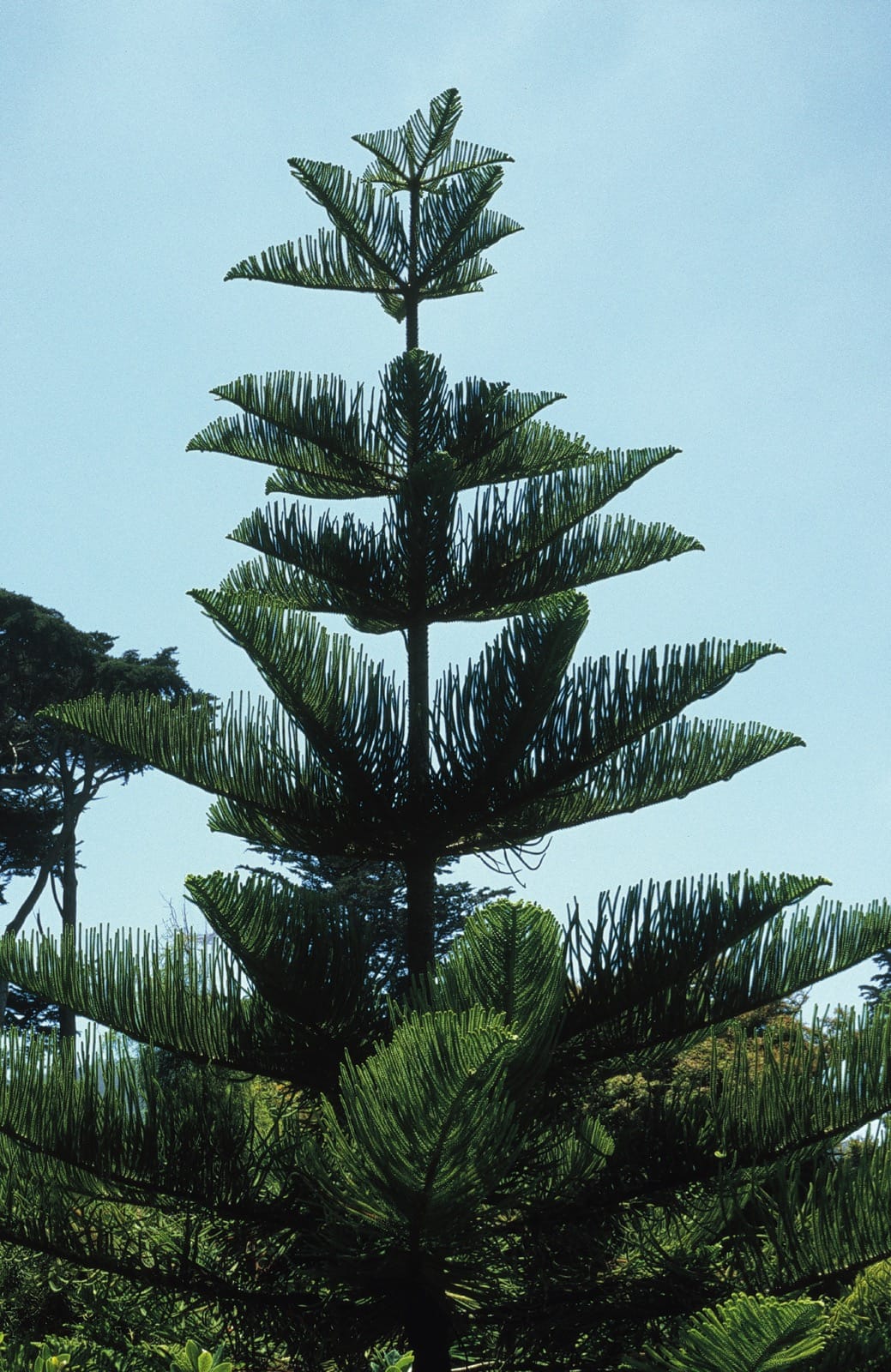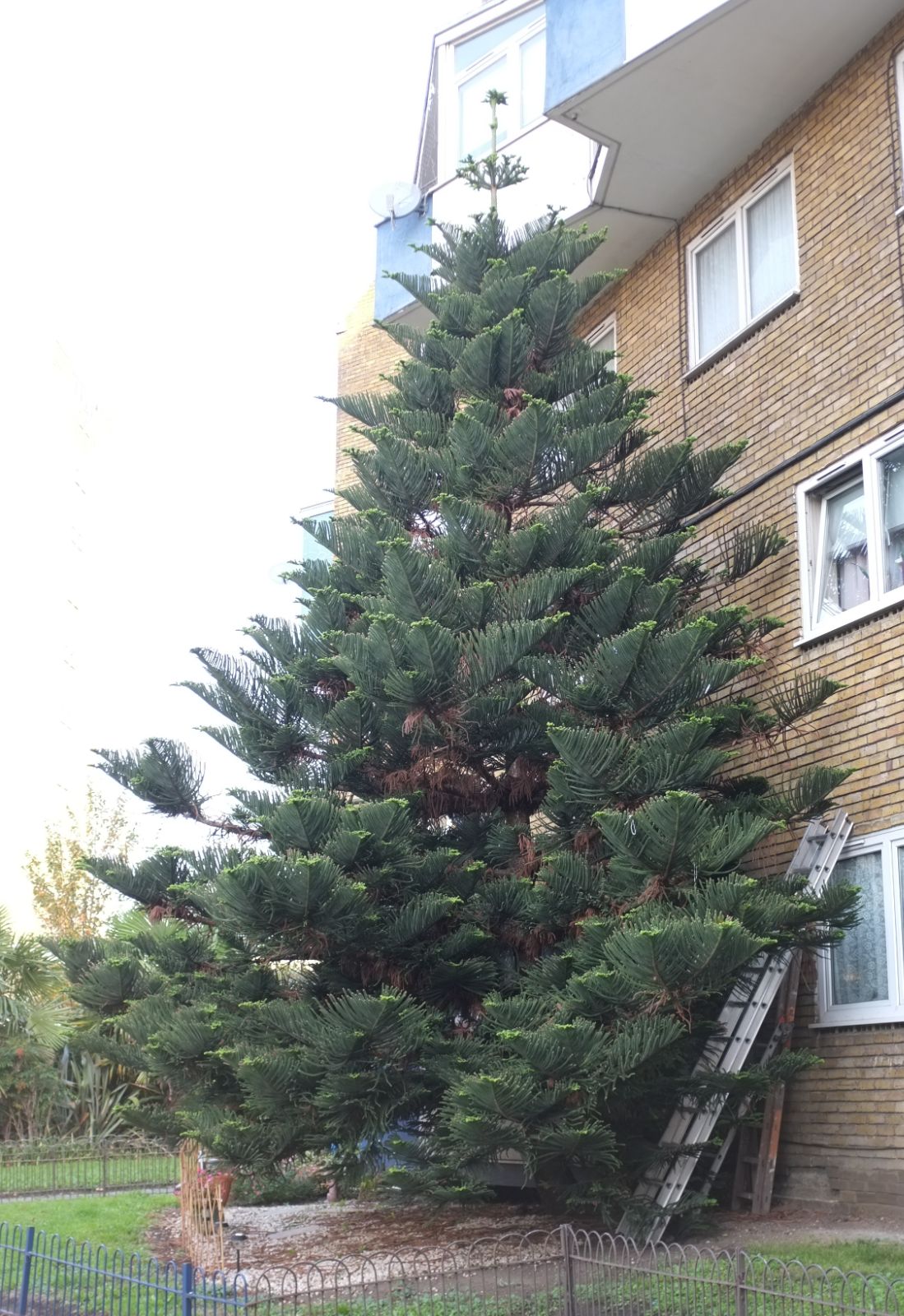Araucaria heterophylla
Sponsor
Kindly sponsored by
Harriet Tupper
Credits
John Grimshaw, Ross Bayton & Tom Christian (2019)
Recommended citation
Grimshaw, J., Bayton, R. & Christian, T. (2019), 'Araucaria heterophylla' from the website Trees and Shrubs Online (treesandshrubsonline.
Genus
Common Names
- Norfolk Island Pine
- Star Pine
Synonyms
- Araucaria excelsa hort. non (Lamb.) R. Br.
Tree to 50(–70) m with straight stem, to 3.5 m dbh. Bark grey-brown, peeling in small scales. Branches in widely spaced whorls, especially in young trees, ascending, often becoming ragged-looking with age when the attractive conical shape is lost. Leaves dimorphic; those on juvenile growth soft, needle-shaped, to 1.2 cm and spreading away from the stem, light to mid-green; mature leaves dark green, hard to the touch, narrow, densely placed and overlapping, 4–5 mm long and incurved at apex, but broader and imbricated on fertile shoots. Male strobili pendulous, clustered, 4 cm long. Female cones 10–12 7.5 cm, with triangular scales and long-pointed incurved tips. Seeds to 3 1.2 cm, winged. (Dallimore & Jackson 1966; Silba 1986; Hill 1998; Farjon 2017).
Distribution Australia Norfolk Island
Habitat Originally in evergreen subtropical forest, emerging over a canopy of angiosperm trees and tree ferns. The original habitat is now modified or disturbed almost everywhere, with Araucaria heterophylla now seen as isolated trees or in small groves with a denuded associated flora.
USDA Hardiness Zone 9-10
RHS Hardiness Rating H2
Conservation status Vulnerable (VU)
The symmetry and shape of the Norfolk Island Pine as a young tree are extremely attractive, earning it a place in many tropical gardens, but as it matures it can look very raddled and in smaller gardens should be replaced regularly. Its attractive juveline foliage has earned it a further contingent of fans who grow it as a pot-plant in conservatorys in the temperate zones.
In our area Owen Johnson has commented that it is ‘so spectacular that gardeners are always going to try to grow it [outdoors] – though I know of no trees in central London, where it ought to thrive, and no old ones on the coasts of Cork and Kerry, where it could have done’ (Johnson 2007). The largest recorded in the British Isles was a 25 m (74 cm dbh) specimen at Tresco Abbey, killed by frost in 1987. Replacements there are doing well (Johnson 2007), and there are a handful of young trees thriving on the Channel Island of Jersey (TC pers. obs. 2018) but on the mainland UK the story is less rosy with most trees, even in the classic coastal and Cornish sites, struggling along to only a few metres high. An interesting exception is a 2.5 m specimen doing well in a garden in Ipswich, Suffolk (Johnson 2007, reported by D. Sanford).
As the species is sold in huge numbers in the juvenile phase as a houseplant it would not be surprising if there were other such individuals growing in sheltered urban localities. Allen Coombes has observed suspected hybrids between A. heterophylla and A. columnaris growing in Mexico (A. Coombes pers. comm. to TC 2019) and it would not be surprising if several different hybrids were widely grown (knowingly or otherwise) is appropriate climatic zones.




